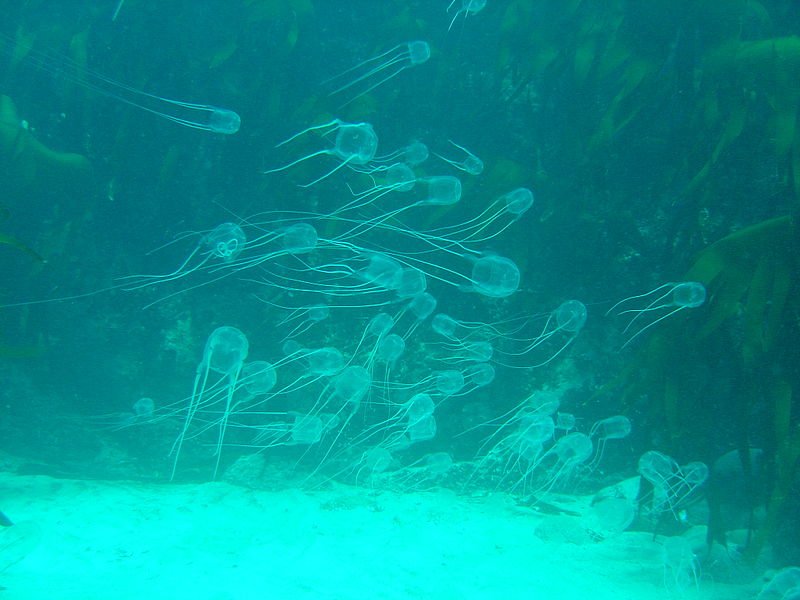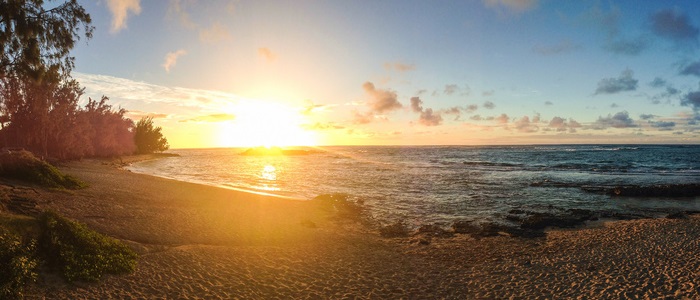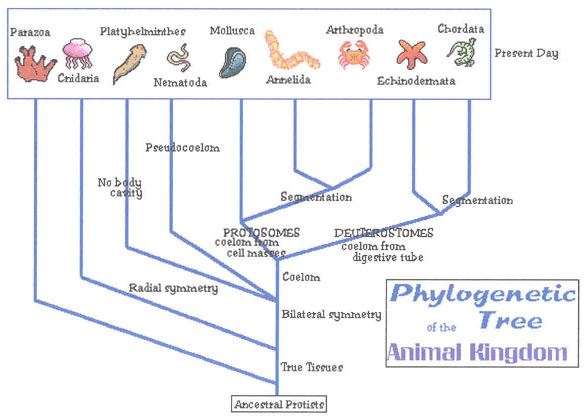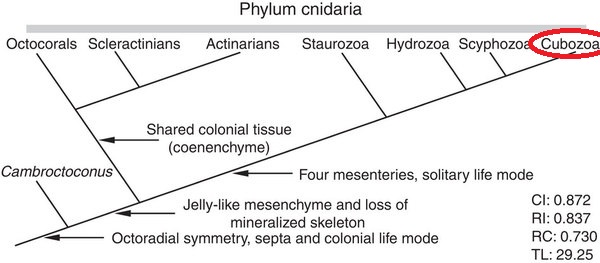Classification
Domain Eukarya
Kingdom: Animilia
Phylum: Cnidaria
Class: Cubozoa
Order: Carybeida
Family: Carybdeidae
Genus: Carybdea
Species Carybdea alata
Domain Eukarya: Organisms in domain Eukarya have eukaryotic cells with a true nucleus containing DNA. They are also defined by their membrane bound organelles which are eveident. Eukaryotes are either unicellular or multicellular like Carybdea alata. The have a variety of modes to access energy which varies by kingdoms (Site Map 2009). Some other interesting multicellular organisms are the Blow Fish, Great Spotted Kiwi, and the Western Gorilla.
Kingdom Anamilia: The Carybdea alata is placed in the kingdom of Animalia. This means that this Hawaiian Box Jellyfish is a multicellular heterotroph. They therefore get their nourishment directly or indirectly from other organisms. They also ingest and digest food through an internal cavity (Myers, P 2001). Some other animals that would qualify under this kingdom and also live in aquatic environments are the Great White Shark, the Sea Otter, and the Atlantic Spotted Dolphin. Also to learn more about characteristics of the Kingdom Anamilia visit Animal Diverity Web.
Phylum Cnidaria: To classify
under the phylum Cnidaria the animal must have cnidocytes which contain
stinging cells called nematocysts. They have radial symmetry meaning
they are symmetrical all the way around their body.
Cnidarians contain two cell layers the ectoderm and endoderm
which makes them diploblasts (Fautin, G.L and Romano, S.L).
Order Carybeidae: To qualify into the order of the Carybeidae a species must have a few certain traits. They have umbrella margins and four groups of tentacles that are placed on wing shaped structures. Four wide sacs that extend outwards from the stomach that is in the central part of the body are all similar traits of these cnidarians. Also, extending into the gastrovascular cavity should be four pairs of leaf-shaped gonads attached along the septa. The opening of the bell cavity will be partly closed by a diaphragm (The Marine Biological Association of the United Kingdom 2013).
Genus Carybdea: The genus Carybdea is classified by a stomach that is not suspended by mesenteries and only 2-3 velarial canals that branch out from each octant. A t-shaped rhopalial niche is also required under this genus (Marine Species Identification Portal)
Species Carybdea alata:
Carybdea alata is a species that is around 80mm in height and at a minimum
of 50 mm wide. They have a
crescentic phacellae and a t-shaped rhopalial niche.
Simple tentacles and gastric filaments that extend horizonatally
at the stomach are all traits specific to this species (Gershwin, L
2005)
<<<Home Habitat and Geography>>>


